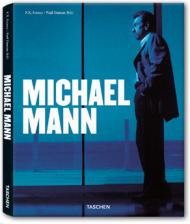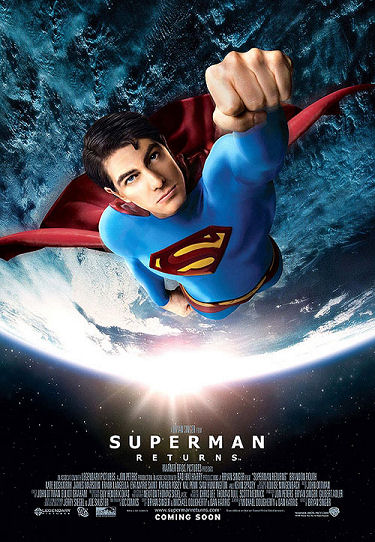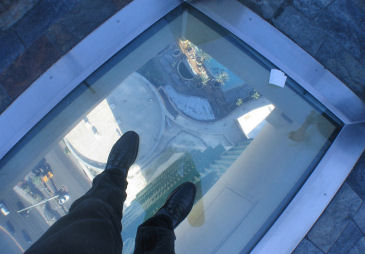Haven’t seen the latest Entertainment Weekly with the story about the most controversial films ever, but good for Nikki Finke having written that while she “has no real problems with EW‘s list, it’s as if only the post-Star Wars prequel generation came up with it.” If, in fact, EW is deliberately skewing its reporting toward a younger demographic (as they seem to be), they’re surrendering whatever cinematic historical authority points they may have accumulated in past years. The story reportedly leaves out Brokeback Mountain, and also blows off (according to Finke) Carnal Knowledge, Easy Rider, Straw Dogs, Apocalypse Now, I Am A Fugitive From A Chain Gang, Dr. Strangelove, Gentlemen’s Agreement, Bad Day at Black Rock, Texas Chainsaw Massacre and Midnight Cowboy . “Not to mention the original Manchurian Candidate which after the JFK assassination was withdrawn from circulation for 25 years?,” Finke adds. “Or Song of the South, which is still Disney’s biggest embarrassment for showing “happy slaves” onscreen. And since they’re counting foreign films (Triumph of the Will is included), then where’s L’Age d’Or, for that matter? I could go on and on.” What about Birth of a Nation?
Confusion hovers over the release of David Fincher‘s Zodiac, one of the most highly anticipated dramas of the fall and a personal can’t-wait for yours truly. The IMDB has an 11.22.06 U.S. release date but Coming Soon has it coming out January 19, 2007. There’s also a Robert Downey fan site that’s reporting the release date as 1.19.07. It says that Fincher is doing some reshoots (which Downey is involved in) and will resume filming reshoots sometime in late June. There’s no reason that additional shooting in the mid-summer should cause a film with a skedded late November release to delay opening until January 2007. Something’s wrong. I’ll check with Paramount publicity on Monday morning, but if anyone knows (or has heard) anything, please write in.
“My loyalty never dies,” Anthony Pellicano has told L.A. Times writer Chuck Philips. “You’re not going to see me take the stand against the clients and employees and other people that are going to be testifying against me. I didn’t rat them out. You understand? I am never going to besmirch a client or any other person that I gave my trust to or who gave their trust to me. I’m never going to do that. I am going to be a man until I fall — if, in fact, that happens.” It’s not a hip thing to say in liberal-wank circles, but there are very few people who stand up and refuse to roll when pressed by the law. Say what you will about Pellicano, but he’s part of a fraternity of honor in this respect.
(a) Favor costar Isidra Vega, director-writer Eva Aridjis following Saturday afternoon’s screening at Brenden Cinemas adjacent to Palms Hotel — Saturday, 6.10.06, 5:40 pm; (b) Puffy Chair principals Jay Duplass (director-writer-cinematographer), Kathryn Asleton (star), Melissa Parmenter (producer)– Friday, 6.9.06, 7:40 pm; (c) former Sundance publicity chief Patrick Hubley, a nice guy who got married last year and travelled all over the world and seems on some level to have “changed” (in a good existential way); (d) Thanks to Gravity trio Jessica Kavana (director), Amy Greenspun (producer) and Gina Phillips (star-producer); (e) Frontier Hotel marquee on Las Vegas Blvd. — Saturday, 6.10.06, 7:20 pm; (f) One of the big things wrong with Las Vegas is that nobody takes the time to just stop gambling or drinking or chasing girls and and look at desert plants and rocks like this combo — Saturday, 6.10.06, 6:25 pm; (g) Las Vegas firefighting station — Saturday, 6.10.06, 6:40 pm; (h) slots inside the Palms — Saturday, 6.10.06, 6:40 pm; (i) self-explanatory.
A respectful salute for Jam in Winans…the guy who did this “Spin DJ is a God” YouTube video. A fantastic little piece — an exercise in cosmic humanitarian humor and…whatever…a look at the roulette wheel of fate. Winans is talented as shit, and the actor who plays the DJ is great also…a young Joaquin Pheonix.
I’ve seen four Cinevegas movies so far — Paul Dinello ‘s Strangers with Candy on Friday night, and then John Maringouin‘s Running Stumbled, Eva Aridjis‘s The Favor and Gregory Berkin and Jack Sheehan‘s Skin City on Saturday. The Aradjis film, a low-budget domestic drama about a nice, dweeby middle-aged guy taking a stab at fatherhood with the son of a deceased girlfriend, is the only one that passed muster. It feels, at times, a little too plain and earnest in the manner of an ABC afterschool special (that ancient series never stops getting evoked), but it has a pared-down simplicity and a corresponding emotional directness that worked (for me). Next time out Aradjis needs to add a bit more texture and stylistic pizazz. Strangers with Candy is a John Waters-influenced over-the-top hipster-degenerate comedy of manners…a kind of film that works for a certain type of audience (i.e., people who get off on feeling hip in a facile way) but which leave guys like me going, “Hmmm.” Thinkfilm will be releasing this sometimes amusing comedy, which first showed at Sundance 2005, on 6.28 (limited). The less said about Running Stumbled, the better. Most of us (I hope, I trust) have a breaking point when it comes to watching grainy video footage of aging, sickly, potty-mouthed low-lifes hanging around their stinky ranch home and drawling and smoking cigarette after cigarette after cigarette. The doc is obviously about buried trauma, but I couldn’t stand it after an hour or so. (The smell of those stinky Marlboros began to make me sick.) Skin City is strictly a Vegas chamber-of-commerce film, made by and intended for the locals. It’s supposed to be a cautionary piece about the Vegas sex industry having an unhealthy influence on the culture, and perhaps even getting to the point where it may be discouraging tourism. (Laughable.) It’s basically not hip or smart enough — the graphics and the tone and the attitudes of the talking heads combine in a perfect storm of mediocrity. The movie lacks irony, humor and is more than a little dull. And to think I saw this thing instead of The Squishy Chair, which is what I’ve been calling the Duplass Brothers’ The Puffy Chair . (I can’t seem to make myself remember the latter.) I was about to see The Puffy Chair when I saw Cinetic’s John Sloss sitting in the audience prior to the Skin City showing, and I wondered, “Why is Sloss at this thing?” An instinct told me to stay and watch it (maybe Sloss knows somethign I don’t) so I did….mistake! Today there’s an Outlaw Cinema Panel (at 1 pm), a debating-society film called Thanks to Gravity, Abel Ferrara‘s Mary, and two film I don’t know much about — G.I. Jesus and 5 UP and 2 Down.
Feeney’s Mann Book
I ran into critic, author, screenwriter and Cinevegas juror F.X. Feeney yesterday morning at a Palms Casino diner at the ungodly (by Las Vegas standards) hour of 8:15 am. We got into this and that, but mainly focused on the topics of Michael Mann and Miami Vice (Universal, 7.28)…and for good reason.

Feeney has seen a rough cut of Miami Vice as part of his research for the writing of the upcoming Taschen book on Mann, a massive 192-page visual/intellectual-orgasm coffee-table book that will hit bookstores sometime in early to mid August. (Feeney has also written a Taschen book about Roman Polanski.) Feeney says that it’s “unfortunate” that Miami Vice is saddled with that TV series title, since the geographical heart of the film occurs in a lawless triangle in South America at the nexus of the borders of Columbia, Venezuela and Brazil — an area in which all kinds international crime…not just drugs but kidnapping, arms dealing, human trafficking…goes on. I pressed Feeney about the heart of the film, and he said Miami Vice essentially turns on a wrenching emotional-ethical conflict about Colin Farrell ‘s Sonny Crockett, who’s working undercover in this criminal triangle area, being in love with Gong Li‘s Isabella, the Chinese-Cuban wife of an arms and drugs trafficker, and Crockett facing an obvious conflict in order to do his job. Feeney says that Jamie Foxx‘s Tubbs character has more screen time than Farrell, but emphasized that this view (again) is based on having seen a rough cut.
Michael Madsen had complained to the BBC’s Chris Vallance about how “there seems to be this driving force to tear down everything that’s a little old.” He was referring to a plan by the Union 76 company to destroy the Union 76 ball signs at the gas stations, which are being re-designed as flattened wafer-like signs. “These are things that were landmarks, it’s a symbol that I remember from childhood,” Madsen said. “What’s the point of smashing them and putting up flat signs?” Vallance explains that “in Madsen’s view Los Angeles’ increasingly bland environment is representative of a process of thoughtless modernization that is taking over the movies [also], and that ‘everything is just getting completely homogenized’.” This is an accurate reading of what’s been happening in Los Angeles for a long time — destroy the old drive-in theatres, destroy any remnants of commercial kitsch from the ’40s and ’50s…anything stylistically distinctive that doesn’t reflect the here-and-now. Mainstream movies have also been losing character and distinctiveness for the last 25 years or so. This is not a disputed view — anyone with a heart and soul and a brain knows this — and yet a certain columnist linked to the Madsen/Vallance/BCC article with the words “Michael Madson (sic) Wants To Save 76 Balls.”
Blue, Baby…Blue
Blue, Baby…Blue
I strongly hinted Friday morning that Bryan Singer’s Superman Returns (Warner Bros., 6.28), which I’d seen the night before, is a very good film. One thing I felt free to actually say at the time (there was a review embargo in effect) is that it delivers in terms of emotionality and a palpable theme. Now that it’s okay to write something, we need to admit something: Superman Returns is perhaps not a vital movie for our times. We all know it’s primarily an attempt to re-launch a franchise so a bunch of fat guys can make a lot of dough…guys who have more than enough as is.
But despite this uninspired raison d’etre, Superman Returns still feels like a truly personal film that came from somebody’s heart. And this, to me, is an extraordin- ary thing, and why it surprised me as much as it did.

Brandon Routh, Kate Bosworth in Bryan Singer’s Superman Returns
It’s a hell of an upgrade (it refines and deepens in the tradition of Christopher Nolan’s Batman Begins), an extremely reverent nostalgia piece, an above-average chick flick, an extremely sumptous and harmonious piece of work (Singer is a masterful technican and film “composer”) and, frequently enough, a solid action thriller.
For many Superman Returns will probably have to be seen twice — once in a regular theatre and a second time in 3D IMAX. Only about 20 minutes’ worth will be in 3D, but it’ll be worth the price, trust me.
< ?php include ('/home/hollyw9/public_html/wired'); ?>
I said Friday morning that the film has a breathtaking 3D airborne action sequence that delivered the greatest sensory thrill I’ve ever gotten from a mainstream movie in my life. What’s striking is that this sequence is obviously a replay of the finale of Paul Greengrass’s United 93, and that Singer has to be aware what this sequence delivers in a fantasy sense.
The almost bizarre time-trip element in Superman Returns feels curious at first. With Brandon Routh obviously chosen to play Superman/Clark Kent because he resembles Christopher Reeve in his late ’70s heyday….with not only John Williams’ theme music from Richard Donner’s 1978 original Superman but the same kind of blue-laser graphics used in the opening credits…with the return of Lois Lane (Kate Bosworth), Jimmy Olsen (Sam Huntington), Perry White (Frank Langella), a bald- headed Lex Luthor villain (Kevin Spacey), the voice and image of Marlon Brando as Jor-El and even Glenn Ford as Clark Kent’s dad (deceased in the film but with his photo sitting on a mantlepiece in the Kent home)…this is really old-home week.
But it’s more than just a return to the Carter years mentality, and more than an attempt to recreate the fascination that the first two Superman flicks enjoyed over that two-year period.

(Fans will recall that Superman II, released in ’80, was partly directed by Donner and partly by Richard Lester, who went on to direct part III entirely.)
Superman Returns feels as if Singer and his team loaded up the finest 2006 CG technology in a big suitcase and time-tripped back to 1982 and ’83 in order to make the Superman III that should have happened (instead of the Richard Pryor version that did).
And yet Singer has made a much better film than part I or part II — craftier, a bit dryer, more fully rendered, less comic book-y, and more deeply felt.
Singer makes movies about gifted outcasts, and this is easily his saddest and most personal to date — not just about a superhero who’s forced to live in his own realm and walks around with a broken heart, but one who’s more or less doomed to stay that way. The poor guy (Routh) is good and gentle, simple but generous of heart…and yet he’s stuck in that blue suit and wine-red cape forever. And either you get the sadness of that situation or you don’t.

If you don’t you may go out the weekend after Superman Returns opens and join the nationwide spirit-of-Cancun party that will happen in theatres playing Pirates of the Caribbean: Dead Man’s Chest…great.
But if you feel that interior stuff and emotional currents are what make movies whole, and if the wafer-thin attitude dance that was Gore Verbinski’s Pirates of the Caribbean felt like a problem (I say this recognizing that for the vast majority, this emptiness is a celebrated asset), you’re may be more on the Superman Returns side of the fence.
The story is basically about unrequited love — the subtitle should be Love Stinks.
It begins with Superman returning to earth after a five-year absence out in space (a voyage of self-discovery) to find Lois, whom he abandoned when he left the planet, living with Perry White’s nephew Jack (James Marsden) and raising a son.
There are complications, naturally, presented by Mr. Luthor and his latest scheme to destroy and dominate the U.S. and its economy, blah, blah, and I’m not dismissing the generic hero vs. villain material …it’s fine. But the current that matters — the thing that has Singer’s interest — is about Clark, Lois, Jack and the boy…about trust, intimacy, emotional consistency and what it takes to make a family.
At first I didn’t recognize Noel Neill, who played Lois Lane in the 1950s “Superman” TV series, playing a rich lady being fleeced by Luthor at the moment of her death, but there’s no missing Jack Larson, the TV series’ Jimmy Olsen, as a bartender in a scene with the new Jimmy and Clark.

There’s genuine beauty and majesty in the visuals of Routh (who’s a good actor but more noticably a very beautiful man) tearing around in the sky, and particularly as he soars 40 or 50 miles above the globe. There’s one special moment when he’s not exactly flying but orbiting, meditative and statue-like as he looks down at the dull-diamond glow of the clustered cities below, and then he “sees” something and he’s off like a bullet.
I loved especially that Singer ends the film in almost the exact same way that Donner’s does, and yet Singer holds back on one particular bit — the difference between a re-do and a recreation.
Superman Returns is dedicated to poor Chris Reeve, who died in October ’04, and his late widow Dana, who passed last March from lung cancer.

The truth is that standing on this plate of glass on the outdoor roof patio of the Palms, 50 stories up, and staring down at the ants spraying sunblock on their backs down at the pool is more than a bit freaky, and takes a kind of courage.
Cinevegas quickies: prior to the arrivals of Strangers with Candy principals in the lobby of Palm Casino theatre — Friday, 6.9, 7:10 pm; too many people in theatre prior to Strangers with Candy screening; crappy photo of nocturnal Vegas from my hotel window — Friday, 6.8, 1:05 pm.
Disney/Pixar/Lasseter’s Cars is being forecast to pull down something in the mid to high 60s this weekend. It’s kinda funny that before The Omen‘s $12.5 million Tuesday opening, the tracking guys were all projecting six-day (Tuesday to Sunday) cumes in the high 20s. The mellowest, friendliest, most good-timey opener of the weekend’s three openers — Robert Altman‘s A Prairie Home Companion — is playing in fewer theatres and skews older, and is expected to pull in about $3.4 million.
This is awful, really ghastly. Watch it at your peril.


